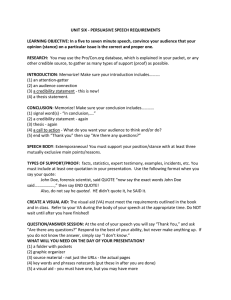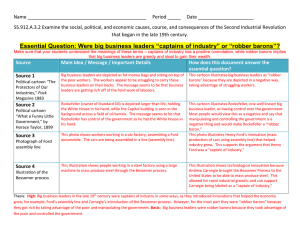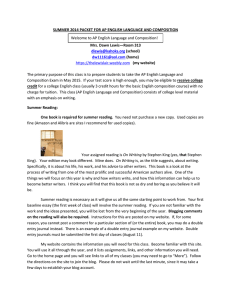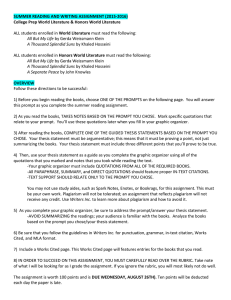HistLab3.2a - Department of Social Sciences
advertisement
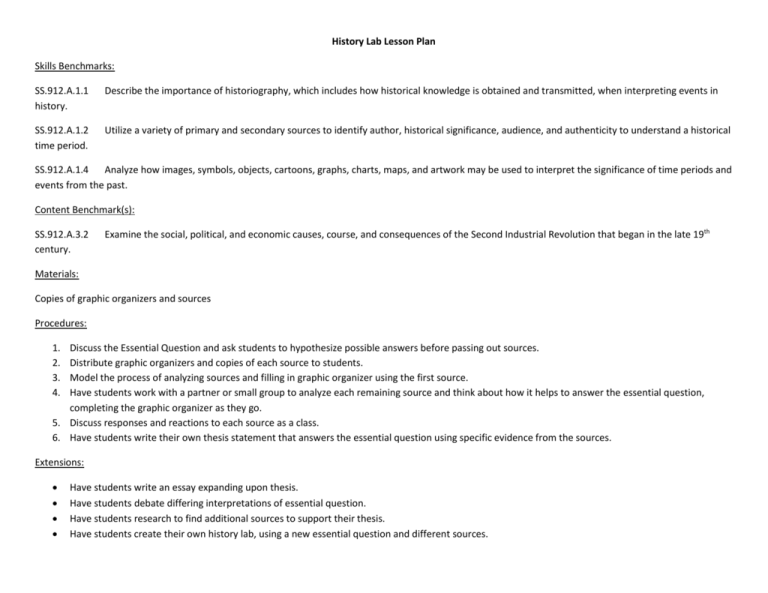
History Lab Lesson Plan Skills Benchmarks: SS.912.A.1.1 history. Describe the importance of historiography, which includes how historical knowledge is obtained and transmitted, when interpreting events in SS.912.A.1.2 time period. Utilize a variety of primary and secondary sources to identify author, historical significance, audience, and authenticity to understand a historical SS.912.A.1.4 Analyze how images, symbols, objects, cartoons, graphs, charts, maps, and artwork may be used to interpret the significance of time periods and events from the past. Content Benchmark(s): SS.912.A.3.2 century. Examine the social, political, and economic causes, course, and consequences of the Second Industrial Revolution that began in the late 19th Materials: Copies of graphic organizers and sources Procedures: 1. 2. 3. 4. Discuss the Essential Question and ask students to hypothesize possible answers before passing out sources. Distribute graphic organizers and copies of each source to students. Model the process of analyzing sources and filling in graphic organizer using the first source. Have students work with a partner or small group to analyze each remaining source and think about how it helps to answer the essential question, completing the graphic organizer as they go. 5. Discuss responses and reactions to each source as a class. 6. Have students write their own thesis statement that answers the essential question using specific evidence from the sources. Extensions: Have students write an essay expanding upon thesis. Have students debate differing interpretations of essential question. Have students research to find additional sources to support their thesis. Have students create their own history lab, using a new essential question and different sources. Name _____________________________________________ Period _____ Date _____________________ SS.912.A.3.2 Examine the social, political, and economic causes, course, and consequences of the Second Industrial Revolution that began in the late 19th century. Essential Question: Were big business leaders “captains of industry” or “robber barons”? Source Main Idea / Message / Important Details How does this document answer the essential question? Source 1 Political cartoon “The Protectors of Our Industries,” Puck Magazine 1883 Source 2 Political cartoon “What a Funny Little Government,” by Horace Taylor, 1899 Source 3 Photograph of Ford assembly line Source 4 Illustration of the Bessemer process Thesis: ___________________________________________________________________________________________________________________________________ ___________________________________________________________________________________________________________________________________ ___________________________________________________________________________________________________________________________________ Source 1 – “The Protectors of Our Industries” 1883 Source 2 – Political Cartoon “What a Funny Little Government” Source 3 – Photograph of a Ford factory assembly line Source 4 – Illustration of the Bessemer process





